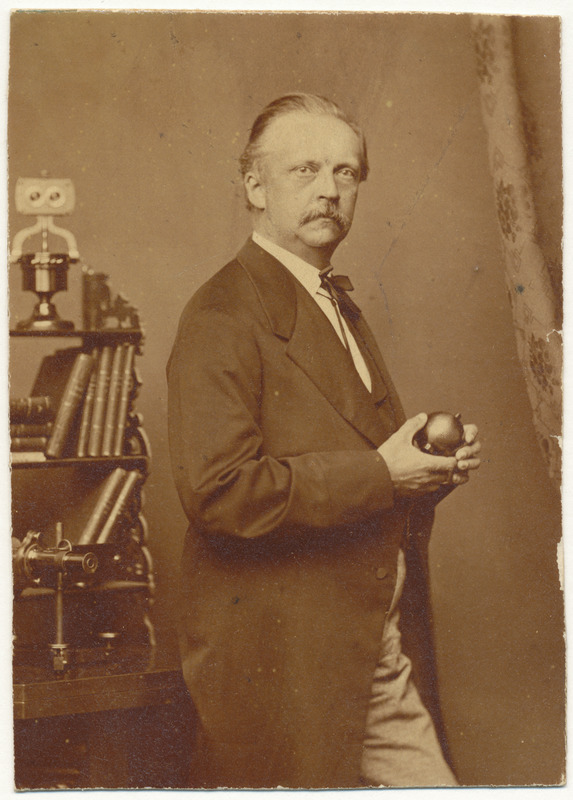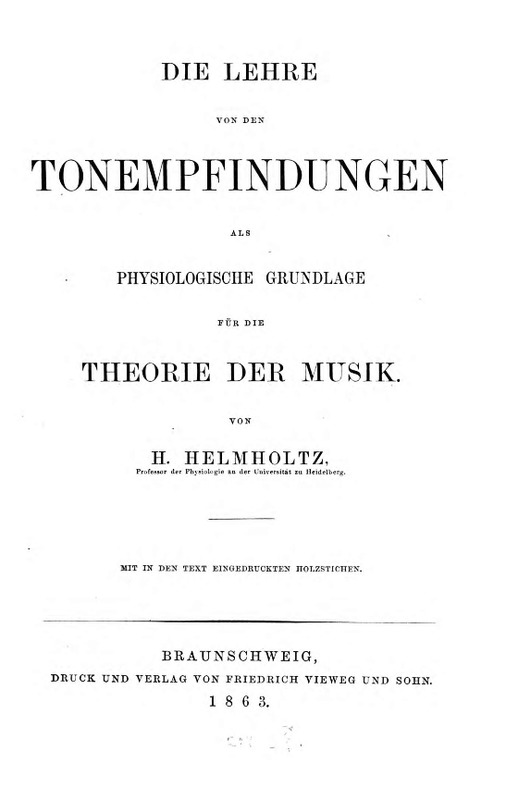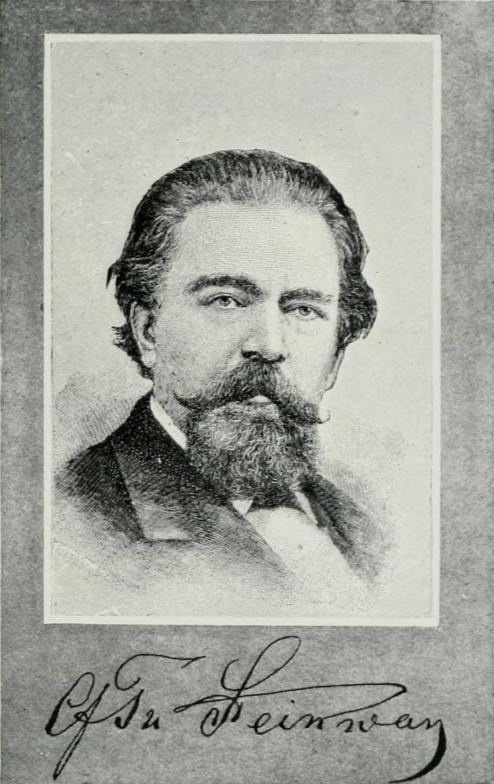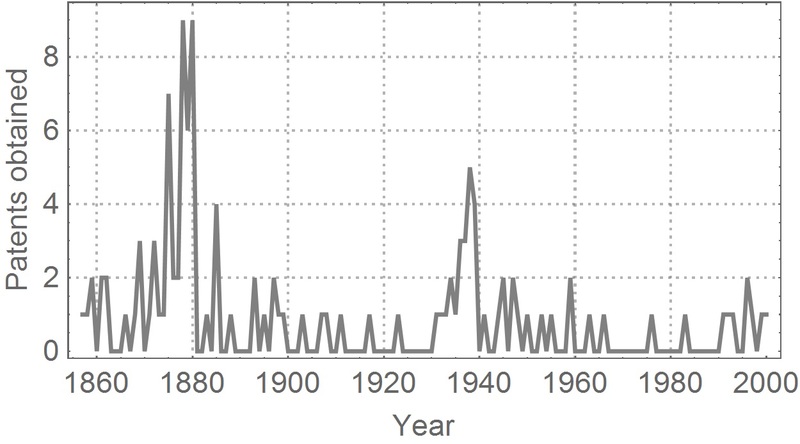Acoustic research and piano construction
Acoustics had long been considered the least advanced branch of physics.[1] During the 19th century, however, knowledge about the nature of sound rapidly increased; the invention of new devices allowed the investigation of previously inexplicable issues. For the first time, sounds could be broken down into their constituent parts and artificially reassembled. This helped scientists better trace the hitherto puzzling phenomenon of timbre.[2] In addition, frequencies could now be measured with increasing accuracy and the anatomical process of hearing could likewise be better understood. These advances also benefited musical instrument makers.
Hermann von Helmholtz (1821-1894) was a polymath who became a central figure in acoustics research in the 19th century. His major work in this field, Die Lehre von den Tonempfindungen [Sensations of Tone] from 1863 was expressly addressed to a broad group of music lovers.[3] By communicating new scientific results to a lay audience, he bridged the gap between science and art – his declared goal. Helmholtz himself was a skilled pianist and used his new measuring methods for detailed investigations of the tonal characteristics of musical instruments. His results were directly applicable for piano makers.
The musicologist Oscar Paul confirmed this in his Geschichte des Claviers [History of the Piano] from 1868.[4] Five years after the publication of Sensations of Tone, Paul predicted “that instrument makers will need much time to process the powerful teachings of that master [Helmholtz]”.[4] Another 25 years later, when Helmholtz traveled to the USA in 1893, William Steinway proclaimed, “Without Helmholtz’s epic discoveries, piano manufacturing would have never reached such development and completeness”. [5] Steinway’s statement indicates a certain finality. As a matter of fact, this time period coincides with the phase when he completely redesigned his grand pianos, recording this in numerous patents. C. F. Theodore Steinway (1825-1889), the company founder’s eldest son as well as its technical director, was the driving force behind this. He had studied acoustics from a young age on and was known throughout his life for his markedly scientific approach.[6] Thus, he well recognized the potential of Helmholtz’s research and how to take practical advantage of it.
[1] Brenni, Paolo: 1800-1900: a century of instruments for the study of acoustics, in: Acoustics and its Instruments. The Collection of the Istituto Tecnico Toscano, Florence 2001, pp. 57-72.
[2] Detailed description of the complex phenomenon of timbre and its exploration in Muzzulini, Daniel: Genealogie der Klangfarbe, Basel 2004. The open access version can be found here.
[3] Helmholtz, Hermann: Die Lehre von den Tonempfindungen als physiologische Grundlage für die Theorie der Musik, Braunschweig 1863. Unless otherwise stated, all references to Sensations of Tone refer to this edition. Helmholtz was first raised to the nobility in 1883, whereupon he was allowed to use the predicate “von” (see https://www.deutsche-biographie.de/sfz70096.html.
[4] Paul, Oscar: Geschichte des Claviers vom Ursprunge bis zu den modernsten Formen dieses Instruments, Leipzig 1868, p. 4f.
[5] New-Yorker Staats-Zeitung, October 6, 1893, p. 12. The complete newspaper article is available on the page William Steinway Diary.
[6] Morris Smith: A Noble Art. Three Lectures on the Evolution and Construction of the Piano, New York 1892.
Citation: Katharina Preller, ‘“One of the most beautiful applications of science to art”? The Helmholtz grand piano by Steinway & Sons’, in: Materiality of Musical Instruments. A Virtual Exhibition.




